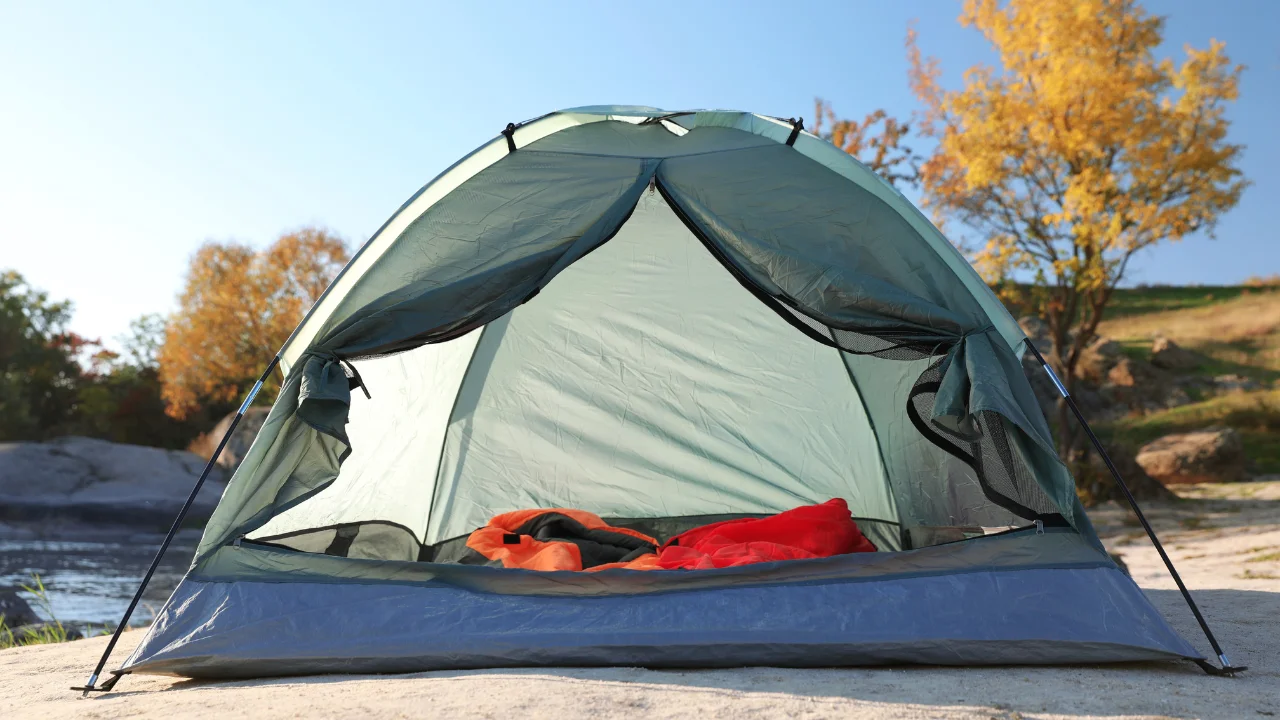
Top Sleeping Bags for Camping – Sleep Warm Anywhere
When you’re out camping under the stars, having the right sleeping bag is crucial to ensure a good night’s rest. It’s one of the top items on any camper’s gear essentials list, and it can make all the difference when it comes to comfort and warmth. Since 2012, I’ve purchased and tested dozens of top models, using them across various national parks and common campgrounds from Alabama to Utah. Whether you’re into weekend trips or living the van life full-time, choosing the right bag is a game-changer. For colder weather, the Alps Outdoorz Redwood is a standout recommendation, offering a warm, comfortable feel, almost like a weighted blanket. If you’re looking for something more versatile, the REI Co-op Siesta Hooded 20 is perfect for multiple seasons, with its lighter weight and a hood that allows you to tuck your head inside for extra coziness.
If you’re on a budget, the Coleman Brazos offers excellent value, providing warmth and durability at a fraction of the price of many other bags. Whether you’re heading out for a couple of camping trips a year or just starting your first camping trip, having the right sleeping bag is essential for a comfortable night under the great outdoors. Bags like the Montbell Down Hugger 650 #1 or Marmot Women’s Teton 15° Sleeping Bag are great for backpacking, while double bags are ideal for couples or side-sleepers.
Table of Contents
ToggleTop Best Sleeping Bags
REI Co-op Siesta Hooded 20 Sleeping Bag
The REI Co-op Siesta Hooded 20 is an excellent choice for car camping, offering a classic rectangular shape that provides ample room to maneuver inside. It features a capacious pillow barn and a loose hood, which makes it easy to fit a pillow from home. The polyester shell and lining are moisture-resistant, easy to clean, and feel nice against your skin. With a temperature rating of 20 °F, it’s perfect for three-season camping. Unlike bulky synthetic bags, this one is light, packs neatly into a stuff sack, and comes in two sizes—regular and long. In 2023, it was updated with 98% recycled insulation fill, keeping it just as warm and durable as before.
This bag is known for its large hood, great features, and comfortable fabrics. It’s lightweight, yet still warm, and offers decent price for all that it provides. It’s also machine washable, making it easy to maintain. However, there are a few cons to consider. The silky shell material is prone to snag, and the hood cinches unevenly, which may affect comfort. Despite these small issues, the REI Co-op Siesta Hooded 20 is a favorite for many, especially because it packs smaller and is highly portable. It’s ideal for those who need a comfortable sleeping bag for various conditions, offering extra features like an insulated top flap to burrow your head when temperatures drop. The new extended sizing is a great addition, making it a better fit for those with larger bodies.
Pros:
- Large hood
- Great features
- Comfortable fabrics
- Lightweight but warm
- Decent price
- Machine washable
Cons:
- Silky shell material prone to snag
- Hood cinches unevenly
Kelty TruComfort Doublewide 20 Sleeping Bag
The Kelty TruComfort Doublewide 20 is a queen-size sleeping bag designed for car campers who prefer to bunk together. It’s one of the roomiest bags we’ve tested, offering plenty of space with a smooth polyester shell and lining that’s easy-to-clean. The durable synthetic insulation keeps you warm even in mid-50s temperatures, with the ability to withstand cooler temperatures as well. Its design includes independent side zippers, foot vents, and sewn-in interior quilts, making it easier to adjust temperature and position while snuggling. You can also add standard pillows to the hooded pillow barn for extra comfort.
This lightweight and affordable bag packs easily into a stuff sack and comes with a lifetime warranty. It features a PFC-free, water-repellent fabric and a large hood that keeps your pillows in place while making your head warmer. The extra-wide top quilt and separate built-in individual quilts let sleepers customize their warmth preferences. However, this double bag can be expensive, and its lightweight fabric is prone to snags. The U-shaped zipper system is convenient but does not unzip completely, which may limit its versatility. Despite these drawbacks, the Kelty TruComfort Doublewide 20 is one of the best two-person models for those who want a well-designed sleeping system.
Pros:
- Large hood keeps pillows in place and heads warmer
- Extra-wide top quilt
- Separate built-in individual quilts
- Packs up easily
- Easy-to-use U-shaped zipper system
Cons:
- Lightweight fabric prone to snags
- Expensive
- Does not unzip completely
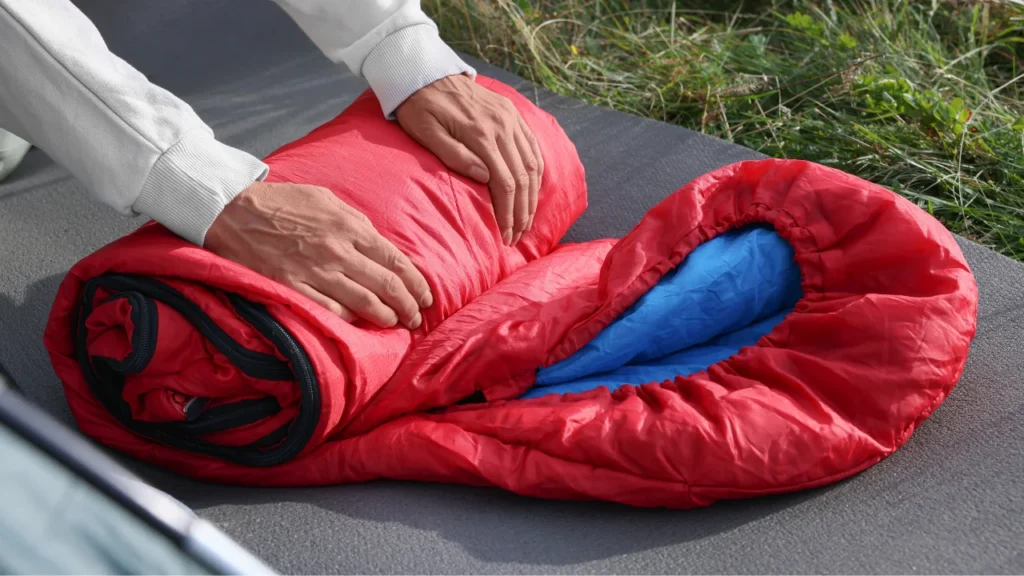
ALPS OutdoorZ Redwood
The ALPS OutdoorZ Redwood is a massive rectangular camping sleeping bag that stands out for its rugged, vintage design and use of high-quality materials. This bag is warm and comfortable, with a cotton flannel liner and a thick canvas exterior that makes it feel plush and super comfortable. After months of testing, we found it to be one of our favorites due to its warmth and comfort, like sleeping in a weighted blanket. The bag’s fabrics are soft, and there are no cool spots—it’s virtually silent during nighttime movement. However, the huge packed size and lack of a protective storage bag might be an issue for those with limited space in their home, car, or trailer. The bag rolls up bed-roll style, but it’s not water-resistant, which makes it less ideal for wet climates.
While the -10° Fahrenheit temperature rating may sound good, we don’t recommend using it in those extreme conditions. The Redwood is too warm for some climates and may be too much for summer nights at low elevations. If you need a more versatile bag with layering options, the Teton Sports Polara 3-in-1 might be a better fit. However, if you’re after a super warm and cozy sleeping bag for luxurious camping experiences, the Redwood is a top recommendation due to its durability and comfort.
Pros:
- Warm and heavy
- Cotton flannel liner
- Large and rugged
- Super comfortable with plush fabrics
- Durable and luxurious
Cons:
- Huge packed size
- Not water-resistant
- Too warm for some climates
- Lacks protective storage bag
Montbell Down Hugger 650 #1 Sleeping Bag
The Montbell Down Hugger 650 #1 is the perfect choice for backpackers who need a lighter, more-stuffable bag. It’s ideal for those with broad shoulders and narrower hips, or anyone who tends to get hot at night and moves a lot while sleeping. This down bag costs less than $400, making it a great deal compared to many pricier bags. The softer loft and diagonal baffles make this bag feel roomier and accommodating compared to most traditional mummy bags. The testing period showed no issues with fraying, and it is backed by Montbell’s lifetime warranty for any manufacturing defect.
This bag is also a great fit for those looking for comfort and warmth. However, the Marmot Women’s Teton 15° Sleeping Bag might be a better fit for those who prefer a warmer, slimmer bag. The Montbell Down Hugger 650 #1 provides excellent warmth with fluffy, water-resistant down insulation that feels plush and overstuffed—it swaddles you while you sleep. It also has a pocket for storing electronics and a compression zipper in the footbox to create more room if needed. Rated for 15 °F, it’s accurate for cold nights sleeping under the stars, but it may be too warm for some.
Pros:
- Lighter and more-stuffable than other bags
- Great for broad shoulders and narrower hips
- Softer loft and diagonal baffles for more room
- Lifetime warranty from Montbell
- Fluffy and water-resistant down insulation
Cons:
- Too warm for some climates
- Not as slim as other options
- Expensive compared to some alternatives
Teton Sports Polara 3-in-1 Sleeping Bag
The Teton Sports Polara 3-in-1 is a stylish interchangeable bag that offers customizable warmth for any camping trip. Its layering versatility allows you to adjust the bag’s components to suit various climates, temperatures, and seasons. This bag comes with separate layers that can be added, removed, or interchanged, making it feel like you have multiple bags in one. The rugged outer shell and warm fleece center quilt keep you warm, while the removable fleece liner offers extra comfort. It’s smaller and lighter than many other sturdier bags and is reasonably priced for the features it provides, such as loops, snaps, zippers, and pockets. However, it can be narrow and confining for some, and the polar fleece liner may feel grabby when you move.
While the synthetic materials are not as cozy or comfortable as high-end canvas designs, the Polara 3-in-1 still gives a soft, warm experience. Some users may find the fleece blanket to be grabby, especially compared to the smooth flannel interior of other bags. If you need more space, the Big Agnes Echo Park 20 is a more roomier option. Despite this, the Polara shines with its versatility, providing the option of three bags in one, making it a great choice for those who need an adaptable sleeping bag.
Pros:
- Warm and customizable warmth
- Removable fleece liner
- Layering versatility
- Water-resistant and rugged outer shell
- Reasonably priced
Cons:
- Narrow and confining for some
- Polar fleece liner can be grabby
- Difficult to pack into the stuff sack
Big Agnes Sidewinder SL 20°
The Big Agnes Sidewinder SL 20° is perfect for side-sleepers and backpackers who like to shift positions while sleeping. The bag has a shell that is cut more widely in the middle than a regular mummy bag, making it easier to change positions without feeling constricted. It also features down insulation with an added layer of synthetic fill in the hip areas, which compresses less than down and stops the fabric from twisting. Behind the hood, there is a pillow sleeve that keeps your pillow steady as you find your comfy sleeping position on your sleeping pad. Big Agnes also offers a limited warranty against manufacturing defects and material defects.
Pros:
- Great for side-sleepers
- Easier to change positions without feeling constricted
- Pillow sleeve to keep your pillow steady
- Down insulation with synthetic fill for extra comfort
- Limited warranty for defects
Cons:
- Not ideal for people who prefer a narrower mummy bag
How to Pick the Right Sleeping Bag for Camping
When choosing a sleeping bag for camping, it’s important to consider a few key factors to ensure you get the right one for your needs. First, focus on warmth. A good sleeping bag should keep you warm through the night, so check the temperature ratings. These ratings are usually between 0 °F and 30 °F, making them suitable for camping and backpacking in early spring to late fall. It’s also a good idea to add 20 °F to the rated temperature for extra comfort. Keep in mind that these ratings indicate the lowest survivable temperature, not the most comfortable one.
Next, look at the insulation. There are two main types: down and synthetic fills. Down is typically more expensive, but it’s lighter, compresses well, and is extremely insulating for its weight. However, synthetic fills retain their insulating power even when wet, making them more water-resistant and easier to clean. Synthetic bags are usually less expensive and less allergenic, which makes them great for people with allergies. For serious backpackers, a fill power of 600 to 700 is sufficient, though you might want 800 to 900 fill power for cool-weather conditions.
Packability and weight are also important when picking a bag. For backpacking, the weight is an important factor—aim for a bag that weighs no more than 4 pounds, ideally under 3 pounds. A small car camper will have more flexibility in packing, but if you’re packing for a weekend trip, consider how much space you have. Zippers should also be high-quality and easy to use without getting snagged. Finally, the price varies widely from $50 to $1,000, depending on the features, so know what you’re willing to spend. For car camping, you can find a solid bag for around $130, while for backpacking, expect to pay between $150 and $500.
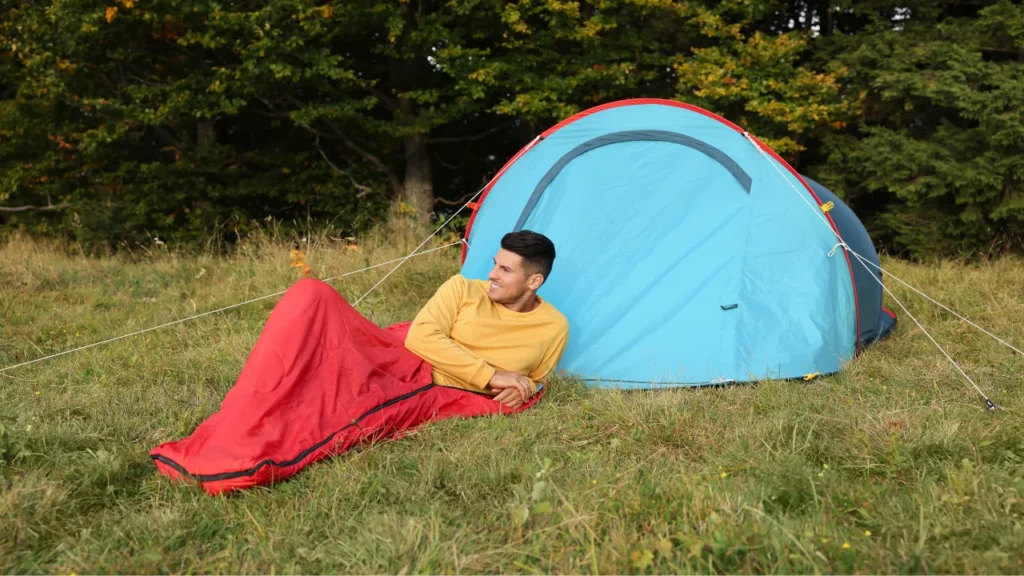
FAQs about Sleeping Bags for Camping
1. What is the best sleeping bag for cold weather camping?
For cold weather camping, look for a sleeping bag with a temperature rating lower than your expected minimum temperature. Down insulation is ideal for extreme cold because it provides excellent warmth without being too heavy. For added warmth, a bag with synthetic fill can retain heat even when wet.
2. How do I choose the right sleeping bag for backpacking?
When choosing a sleeping bag for backpacking, consider the weight and packability. Look for a bag that weighs no more than 4 pounds and compresses well for easy packing. A fill power of 600 to 700 is great for most conditions, but for serious backpackers, you may want 800 to 900 fill power for colder climates.
3. Can I use a sleeping bag with synthetic fill in wet conditions?
Yes! Synthetic fills are ideal for wet conditions because they retain their insulating power even when wet. Unlike down insulation, which loses warmth when wet, synthetic bags dry quickly and are easier to clean, making them a great choice for rainy or humid environments.
4. How do temperature ratings work for sleeping bags?
Temperature ratings indicate the lowest survivable temperature the sleeping bag can handle. If the bag is rated for 20 °F, it means the bag should keep you safe in temperatures as low as 20 °F, but you may want to add 20 °F to that for extra comfort. For warmer conditions, look for bags rated for higher temperatures.
Conclusion
When selecting the right sleeping bag for camping, it’s important to consider factors like warmth, insulation, weight, and packability. Whether you’re a backpacker needing something lightweight or a car camper looking for comfort and warmth, there’s a bag that suits your needs. Make sure to pay attention to the temperature ratings and choose between down or synthetic fills depending on your climate and personal preference. Always think about how versatile you need your bag to be, whether it’s for cold weather camping, summer nights, or varying conditions across different seasons. With the right sleeping bag, you can ensure a comfortable and restful experience on your next adventure.

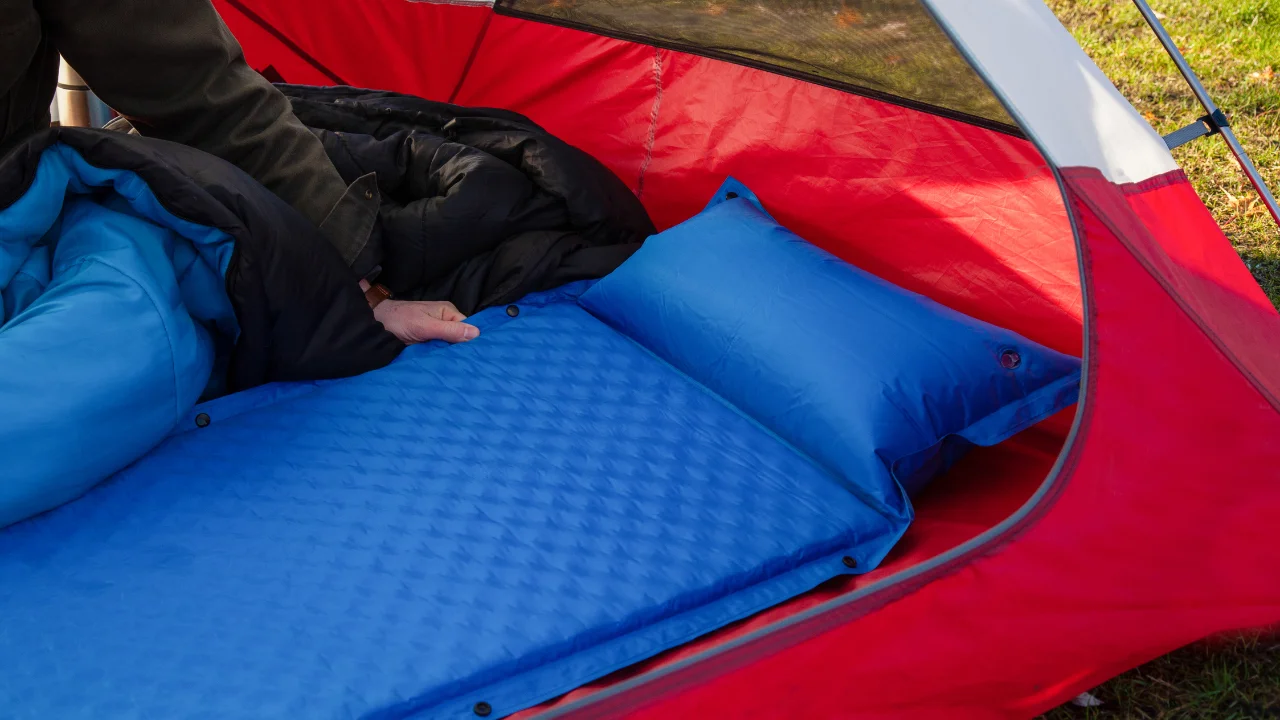
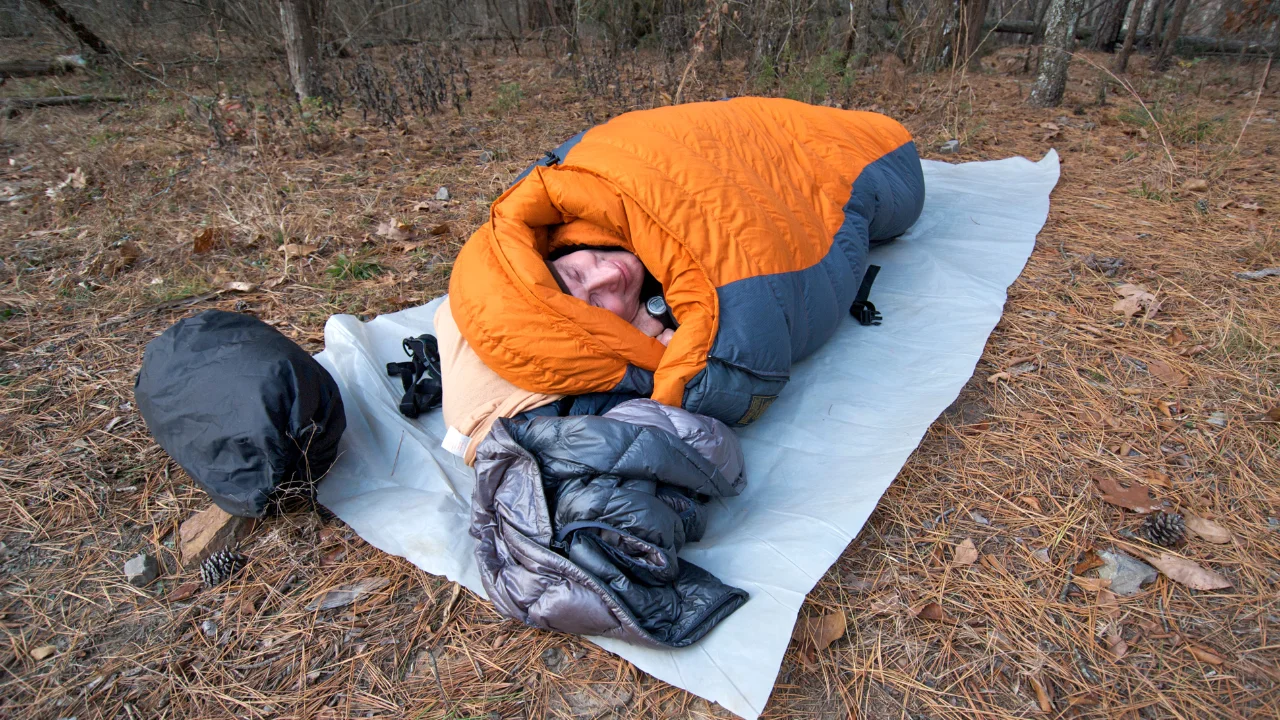
2 comments